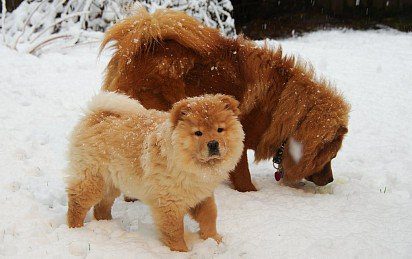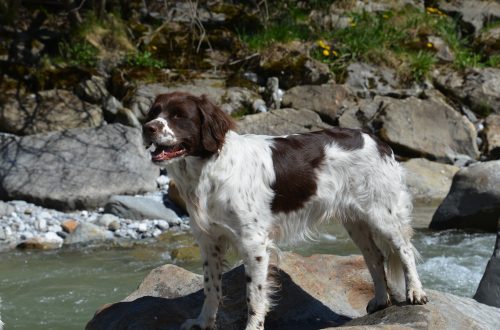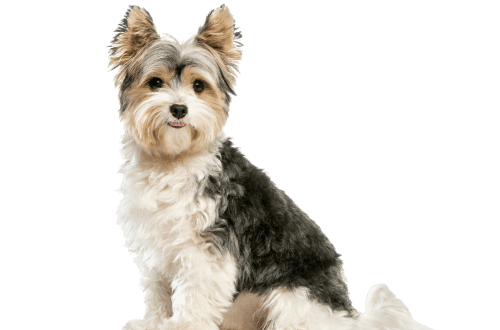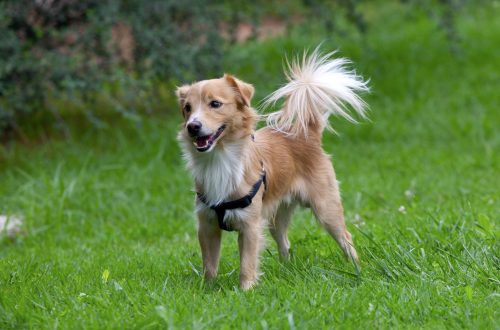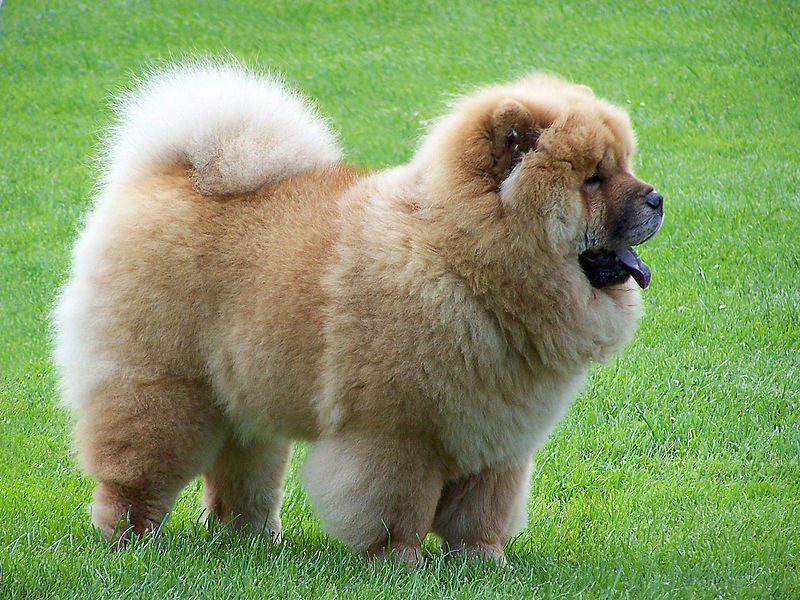
Chow Chow
Chow Chow is a dog with a striking appearance, a history covered in legends and an amazing, completely unknown character.
Contents
- Characteristics of Chow Chow
- Basic moments
- History of the Chow Chow
- Why Chow Chow?
- Video: Chow Chow
- Appearance of chow chow
- Photo of an adult chow-chow
- Chow Chow character
- Education and training
- Care and maintenance
- Health and disease of chow chow
- How to choose a puppy
- Photo of chow-chow puppies
- How much does chow chow cost
Characteristics of Chow Chow
| Country of origin | China |
| The size | average |
| Growth | from 46 to 50 cm at the withers |
| Weight | from 23 to 32 kg |
| Age | 8–10 years |
| FCI breed group | spitz and breeds of primitive type |
Basic moments
- The first thing that catches your eye is the unusual appearance of the animal. A luxurious lion’s mane, a slightly frowning expression of the muzzle and a purple tongue make the Chow Chow an absolutely unique dog.
- Behind the cute appearance of a huge plush toy lies an independent, and sometimes stubborn character. Chow Chow can be safely attributed to the aristocrats of the canine world – they are proud, self-confident, their behavior is balanced and majestic.
- Chow-chow will give her dog love and devotion only to the owner, and she will choose the “leader” on her own, and it will be impossible to convince her, which is why it is better to take a puppy into the house at an early age.
- Congenital stubbornness can be a serious problem in training. It is important that the owner has sufficient experience in keeping dogs.
- Chow Chows are stingy in expressing their feelings, but at the same time they are sensitive to the state of the owner and are always ready to help.
- Dogs of this breed are clean, and therefore do not really like walking in “non-flying” weather.
- Chow Chows are very smart, they have their own opinion about everything and are extremely reluctant to do what they consider optional for themselves.
- The manifestation of aggression towards strangers is observed only in the event of a real threat. The reaction to other animals is usually neutral, but the owner must be prepared for possible sudden outbursts of hostility.
- Relations with households are friendly, but the pet will not approve of excessive emotionality and familiarity.
- Chow-chows are very silent and will not disturb your neighbors in the porch.
- Girls are usually more obedient, active and inquisitive, males are better suited for a show career.

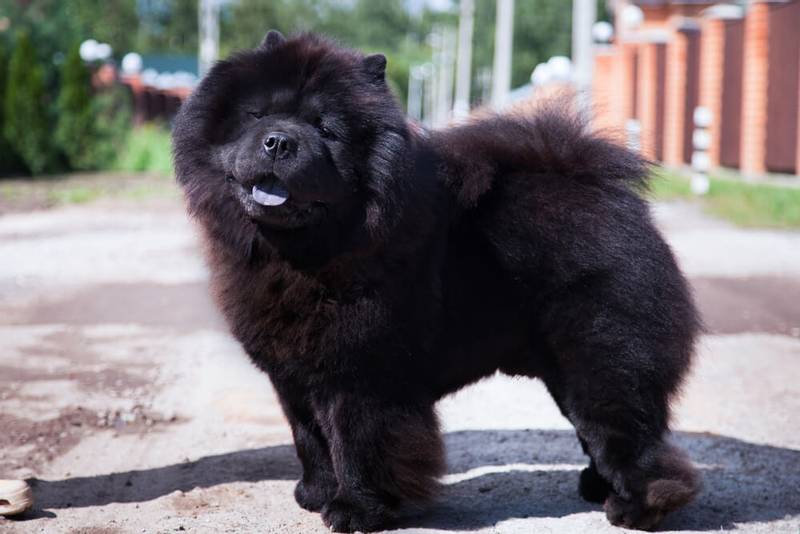
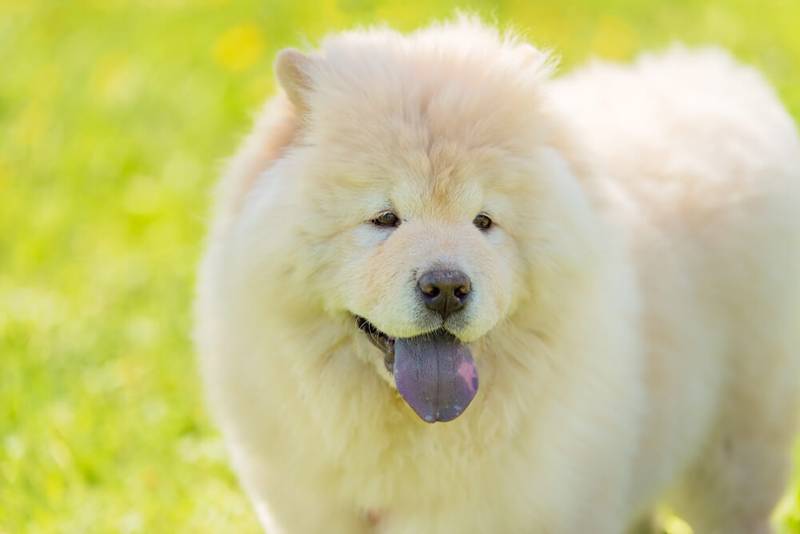
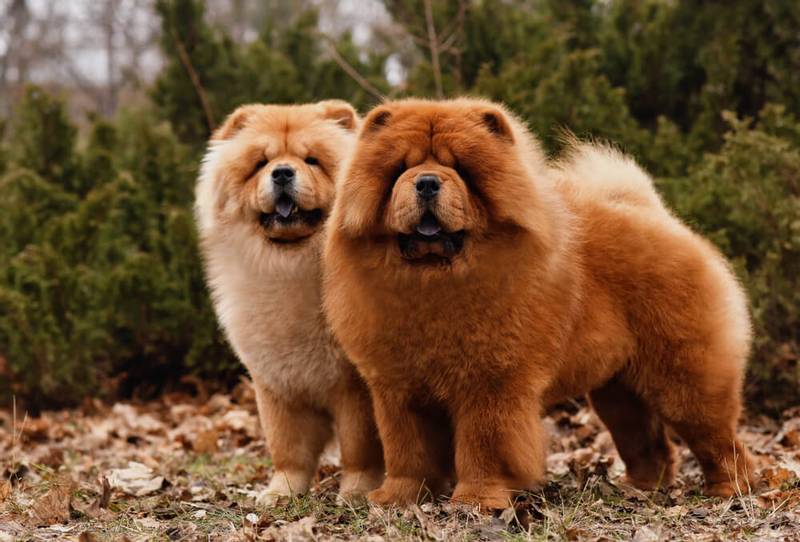
Chow Chow is one of the oldest breeds in the world. A dog that licked the edge of the night sky, a dog-bear, a dog-lion – what epithets did not reward the representatives of this breed with human fantasy. Appearing in China over 2,000 years ago, Chow Chows were originally used as watchdogs, hunting dogs, and even fighting dogs. Now it is a companion dog that has retained in the depths of its mysterious soul all the best features of its distant ancestors.
History of the Chow Chow
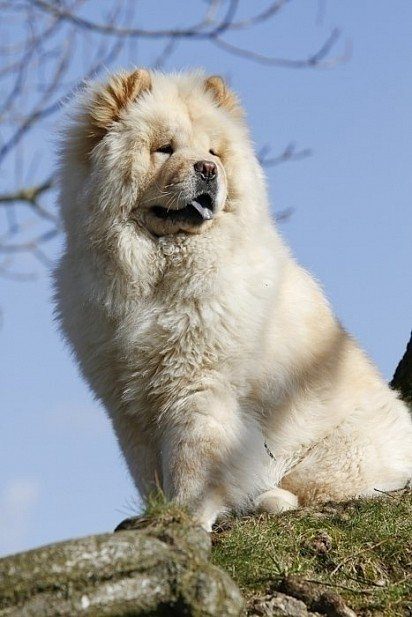
To date, there is no reliable information when exactly the history of chow-chow began. But the fact that it is several thousand years old is beyond doubt. According to some sources, as early as the 3rd millennium BC. e. in the palace library of the Chinese emperors there were records about this amazing breed, which, unfortunately, have not survived to this day.
One version of the origin of the breed says that the first dogs of this type appeared in China as “gifts of peace” that the Mongol conquerors presented to the emperor. The bear dog came to the Mongols as a war trophy during skirmishes with the indigenous peoples of Siberia. Archaeological finds confirm that the ancestors of the Chow Chow lived in this area.
The question of the genetic roots of the representatives of the breed remains open to this day. Many experts tend to accept the version of the origin of Chow Chow from polar wolves. The fashionable legend that the first dogs of this breed appeared as a result of interspecific crossing of a husky and a polar bear does not hold water.
Once in China, chow-chows were at first the property of only the courts of high-ranking nobles. But gradually interest in animals faded, and dogs spread throughout the country, they could be found even in the homes of poor Chinese. Control over the purity of the blood was lost. The situation was saved by the monks of Buddhist monasteries in Tibet, Manchuria and Northern China, who carried out thorough selection work, kept blue and black chow chow pedigrees.
Europe met the “bear” dog as an outlandish animal from the distant Middle Kingdom. The first “fluffies” appeared here in 1780 and for almost a hundred years they were perceived only as exotic animals. The situation changed in 1865, when Queen Victoria, fascinated by a plush miracle presented to her, showed interest in the breed. In 1887, the British started breeding chow chows, and eight years later the breed standard was approved and the first chow chow club appeared in the Old World.
The Russian history of the breed dates back about eighty years, when the animals appeared in the Soviet Far East. Later, after 1945, some of the dogs were brought to the USSR from the eastern regions of Germany. A more or less stable population was formed only by the 60s of the last century. It became possible to get closer to the world quality standards of the breed only after 1976, when purebred Chow Chows from recognized and titled producers were brought to the Leningrad Kennel Club.
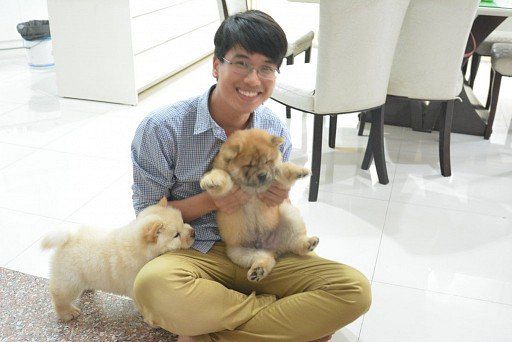
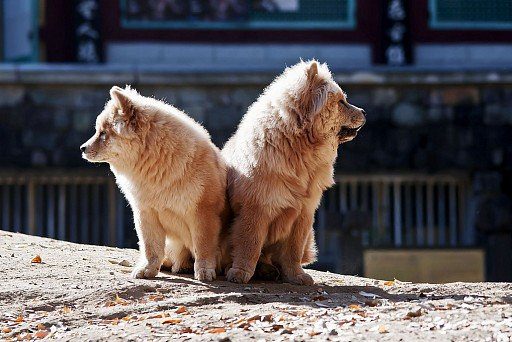
Why Chow Chow?
As well as versions of the origin, there are several options for interpreting the name of the breed.
- So, the word “chow” among the Chinese means “an animal that can be eaten.” And although Koreans are more likely to have gastronomic addictions to dog meat, China has never disdained this dish either.
- However, the same Chinese have the word “kau” – “dog”, which is very close in sound to “chow”. The version is less bloodthirsty, therefore more popular.
- The rich Chinese language gives us another explanation. The word “chow” means a dog that is distinguished by great strength and courage – these are the features that are characteristic of real chow chows.
- The European version refers us to the English “chow-chow” – this is the name of the special premises on merchant ships that transported dogs of this breed across the ocean.
Video: Chow Chow
Appearance of chow chow
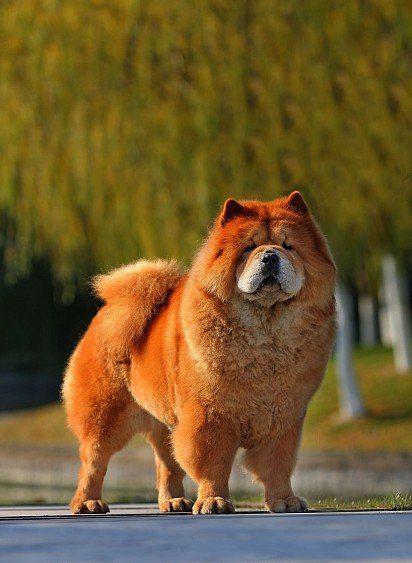
The Chow Chow is one of the most recognizable dog breeds in the world. Amazing coat and dark tongue have become the reasons for the enduring popularity of animals.
Growth
The height at the withers of a male is from 48 to 56 cm, for females – 46-51 cm.
The weight
An adult male weighs 25-32 kg, a female – 20-27 kg.
Head
Chow Chow skull is flat, wide, with good filling under the eyes. Stop is not pronounced.
Muzzle
Wide, medium length without “fox” point. The nose is broad and large, usually black. In fawn and almost white dogs, a light color is allowed, and for cinnamon (cinnamon color) and blue chows, a natural shade of the lobe is allowed. The sky, lips (preferably, and gums) are black. The tongue is blue-black.
Eyes
Oval, medium size. The pupil is well visible. Chow-chow blue or cinnamon color may have eyes matching the color of the suit.
Ears
Thick, small in size, rounded at the ends. Set wide apart, erect, but slightly tilted towards the eyes, which gives the muzzle a frown.
Neck
Harmoniously curved and well set on the shoulders. Powerful, not short.
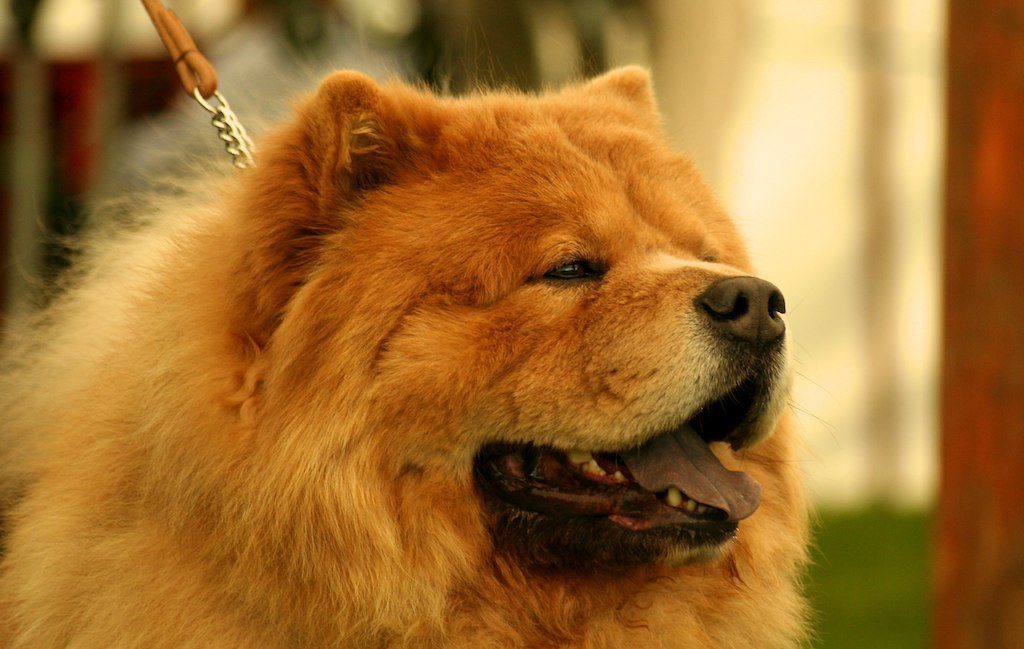
Back
Straight, short, strong with a powerful loin.
Breast
Deep, well developed with pronounced but not barrel-shaped ribs.
Tail
The tail of the Chow Chow is set high and lies on the back.
front legs
Absolutely straight, medium length. The backbone is strong.
hind legs
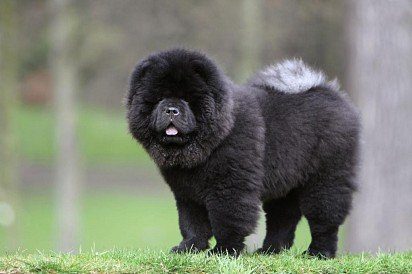
Powerful, medium length. The angles of the hocks are minimal, which gives rise to a “stilted” gait characteristic only for this breed.
Paws
The paws of the Chow Chow are small, rounded, raised on the fingers.
Wool
Long – very dense, straight and erect with a fairly coarse outer coat and a soft undercoat. It forms a characteristic “lion’s” mane around the neck, long “trousers” are well defined on the back of the thighs. Intentional shortening of the hair that changes the appearance of the dog is never allowed.
Short (smooth) – very thick, has a plush structure. The hair is located perpendicular to the body.
Color
Necessarily homogeneous pure colors – black, fawn, cinnamon, red, especially valuable – blue and white. Shades of the base color are allowed, but never spots.
Any deviation from the standard is a fault or a disqualifying feature, depending on the degree of its manifestation.
Photo of an adult chow-chow
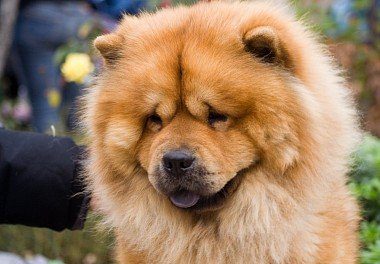
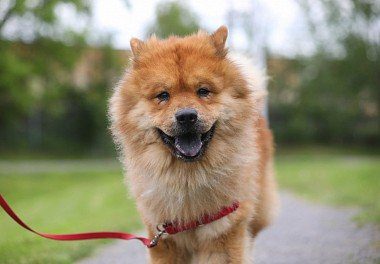
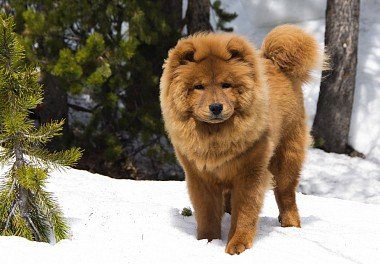
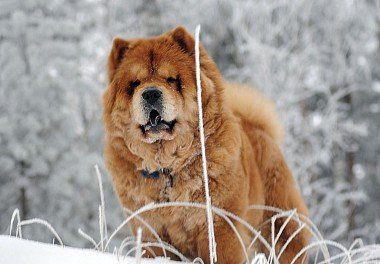
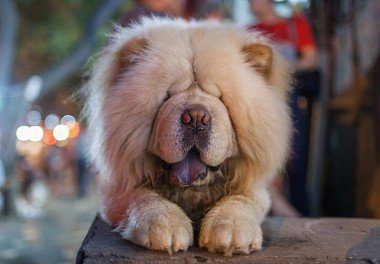
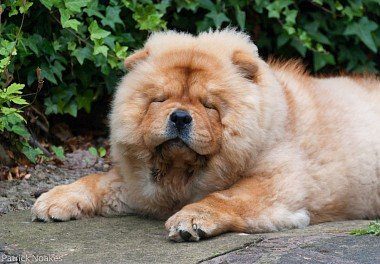
Chow Chow character
As far as the appearance of the Chow Chow is original, its character is just as non-standard (in relation to dogs). People who know about the cup by hearsay claim that this is an arrogant and heartless animal, and the owners of these unusual dogs speak with one voice about the kindness, devotion and responsiveness of their pets.
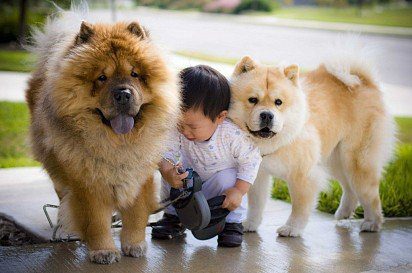
The main character traits are independence, poise and dignity. This dog will show even love for the owner with special restraint, hiding endless devotion inside. Like all large dogs, the Chow Chow chooses the leader of the pack on its own. And it’s not at all a fact that it will be the one who brought the puppy into the house. Other members of the household will also receive their share of favor and kindness, but the heart of the animal will belong only to the “leader” all his life.
Outward manifestations of love are very restrained. The dog whines almost inaudibly, lightly pokes its nose into the owner. The delight of communication can also give out a barely noticeable twitch of the tail.
Discontent usually manifests itself in a dull growl, which, depending on the degree of anxiety of the dog, has different shades.

All chow chow owners note an amazing, almost telepathic, ability to feel the mood of the owner if he is upset or unwell with something. But this dog will not understand and disapprove of excessive emotionality and irascibility.
If you have a child in your house, explain to him that this plush animal is not a toy at all and he will not endure pain and excessive pranks even from members of his flock. If the kid offends the animal, then he will never be able to find a common language with him.
The Chow Chow’s attitude towards strangers is always wary and distrustful. The dog usually does not show aggression, but it will not accept unsolicited caresses from a stranger.
Relations with other animals cannot be called simple. Chaushka will love the cat with which she grew up, while the tailed one, seen on the street, will be pursued by her at every opportunity. There is usually no interest in oncoming dogs. If the first acquaintance nevertheless took place, then the decision made by the chow will never change – either it is an enemy, or a friend, or just an acquaintance, for whom it is enough to “just politely nod in response”. Of the other dogs that are kept in your home, the Chow Chow will only tolerate a member of its own breed of the opposite sex.
Chow-chow does not celebrate the coward. In case of manifestation of aggression towards itself, the dog will without hesitation enter into a fight to the bitter end. Powerful jaws, large size and thick fur that protects against bites are good arguments in any fight.
Chow will rush to protect the owner without hesitation, even if he was not trained in security work. He just loves you and is ready to give his life for it.
Education and training
Outwardly resembling a huge plush toy, Chow Chows are distinguished by a very firm and even somewhat wayward character.
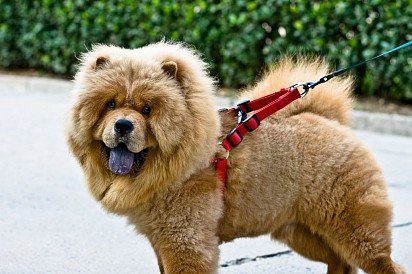
Raising an obedient dog turns out to be a matter of great patience, determination and consistency.
Raising a Chow Chow puppy should start at an early age. Nature has laid in this cute fluffy lump such willpower and integrity of character that only a real leader will obey the cup. Moreover, your leadership should be calm, confident and not subject to the slightest doubt. A hysterical aggressive person will never cope with this dog. Flirting and lisping, you also will not achieve results. The pet, having felt the weakness of the owner, will take the place of the leader himself and it will be almost impossible to make changes to such a hierarchy.
For successful upbringing, it is necessary to socialize the animal as early as possible. Walk with him in crowded places more often so that the puppy gets used to the idea that there are many more strangers besides you. This will gradually level out the innate dislike for strangers. Chow Chows are very jealous of the inviolability of their home. The situation when guests come to the house who (according to the puppy) allow themselves to move uncontrollably around its territory can cause stress in the dog and the subsequent aggressive reaction, so you should try as quickly as possible to teach the baby to be calm about new faces, smells and voices .
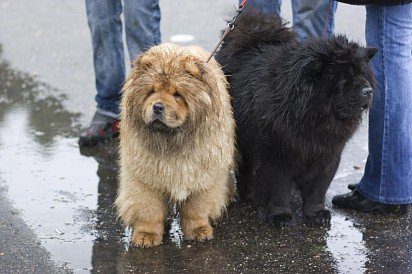
A big plus in raising Chow Chows is their innate cleanliness. The puppy very quickly understands where you can go to the toilet, learns to endure from walk to walk. But do not abuse this ability – after sleep and each feeding, the dog must be taken outside.
Chow chow training at home seems to be a very problematic undertaking. A representative of this breed simply will not follow orders that he considers incomprehensible or stupid. If you do not have enough time or you experience even the slightest doubt in your abilities, it is better not to get down to business. Immediately give your pet into the hands of an experienced instructor, otherwise it will be extremely problematic to correct the consequences of training.
Experts note that the execution of even a simple command takes place at the cup in several stages. First, the dog will evaluate the expediency of the command in this situation, then decide how much you are determined to carry it out, and only realizing that your willpower cannot be broken, will it perform the required actions. If you give up the slack, the cup will continue to do its own thing. The situation is even more complicated with the execution of service commands, especially for endurance. Well, the animal does not understand, why stay in the same position for a long time. And if he doesn’t understand, then he won’t do it.
The main difficulties in Chow Chow training are encountered when working with males. Girls are more accommodating, obedient and sociable, not as striving for leadership in the pack as the representatives of the stronger sex.
Care and maintenance
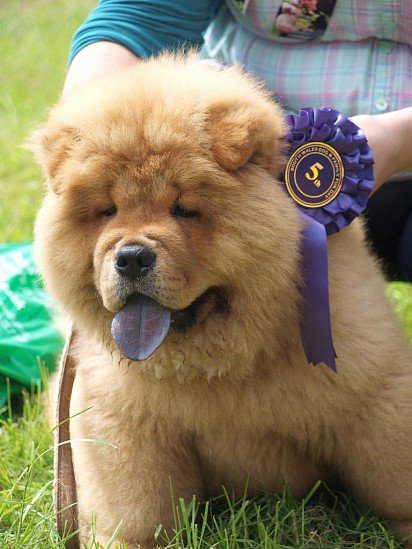
The conditions of a city apartment are quite suitable for keeping a Chow Chow. This dog is distinguished by a balanced and calm character and, being alone, will never howl loudly, annoying neighbors, or spoiling furniture. And the cup is amazingly clean, which all owners note with special pride.
Due to the special structure, the coat of dogs of this breed practically does not get dirty, and when contaminated, it cleans itself perfectly, so experts do not advise bathing a pet more than 2-3 times a year. Of course, before entering the exhibition ring, this procedure is indispensable.
Contrary to popular belief, brushing a dog every day when she is not shedding should not be done. This procedure is enough to perform once a week with a rare comb. The Chow Chow’s coat is not prone to tangles. The exceptions are the armpits and places behind the ears. These areas need to be monitored closely. During the molting period, the fallen undercoat remains on the coat and is well removed when combing, which these days requires a systematic approach.
Connoisseurs of the breed note that a richer, longer and thicker coat is characteristic of males. The Chow Chow, which spends a long time on the street or is kept in a specially equipped aviary, looks even more luxurious. This applies to adult dogs. In puppies up to six months of age, the body is covered with fluff, which quickly falls off, gets wet and dries very poorly. The condition of the baby’s coat must be carefully looked after and try not to bathe until the first adult molt.
The procedures associated with cleaning the ears and teeth of a dog are no different. But cutting the claws is usually not needed – due to the structure of the paws, they grind well on the ground. Nails on dewclaws require more attention, especially in winter. The dog’s eyes need daily care – they need to be wiped with a cotton swab dipped in a special solution.
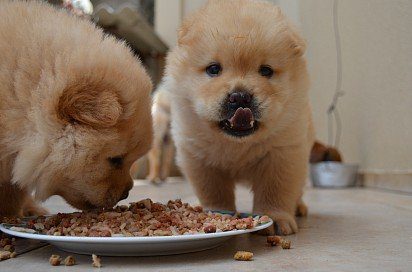
For feeding the Chow Chow, the use of premium dry food with a reduced content of fat and protein will be optimal. It can be a mixture for animals with a predisposition to allergies, or any other dietary composition. Even three-month-old babies can be switched to a menu for adult dogs, as puppy food is usually saturated with fats, and this is not very good for chow chows.
If you cook your own food for your pet, then you need to ensure that the diet does not contain a lot of fats and carbohydrates. Sea fish and meat are preferred raw, and cabbage, lettuce and other leafy crops will bring the greatest benefit from vegetables. Groats are not welcome, with the exception of buckwheat and rice in very small quantities. The tubular bones of the bird must be completely excluded. The introduction of a small amount of vegetable oil into the diet contributes to the improvement of the quality of the coat.
As for the diet, it should be remembered that it is better not to feed the Chow Chow, and the possibility of a constant “snack” between feedings should be excluded. In any case, the nutrition of dogs of this breed must be monitored carefully. Chow Chows are prone to allergic reactions, and any imbalance in the diet, especially an excess of carbohydrates, can lead to undesirable consequences.
Chow chow puppies are not shown running long distances or long hikes. It is better to let the baby off the leash so that he can regulate his physical activity.
Responsibly approach the selection of a collar for your pet. The usual one will not work – the hair is wiped off from it and the appearance of the dog noticeably suffers. The best option is a narrow leather or fabric collar or a special harness.
A well-groomed and healthy dog is the best recommendation for you as an experienced and skilled owner!
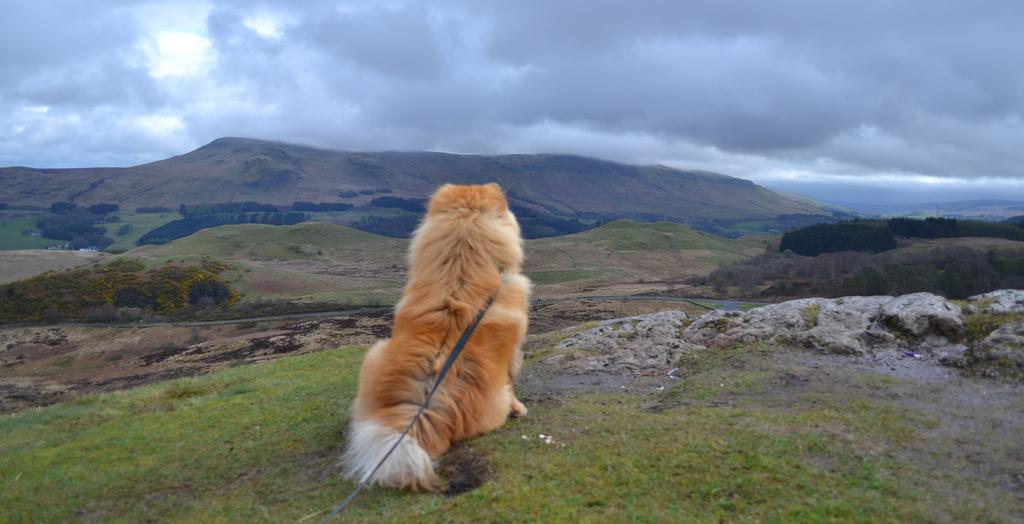
Health and disease of chow chow
Chow Chows are healthy dogs. However, there are a number of hereditary diseases that are most common in representatives of this breed. These include atopic dermatitis, hereditary myopathy, and inversion of the eyelid.
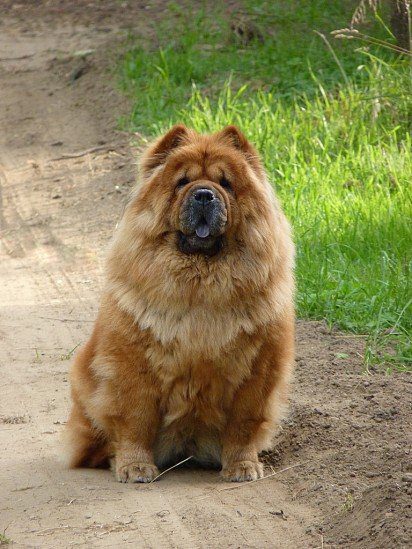
Hereditary myopathy is manifested in a decrease in muscle tone, a violation of the ability of the muscles to contract, and atrophy. The danger of the disease lies in the fact that it affects all skeletal muscles. The disease is manifested by difficulty in activity – the animal gets up hard, the movements are constrained, during walks the dog may even fall and not immediately rise, the hind legs begin to move in “hare jumps”. More often, such problems begin to appear at low air temperatures. If any of these symptoms appear, you should immediately contact your veterinarian. The dog should be kept warm. The disease is dangerous, as it can lead to serious complications and even death of the animal.
Atopic dermatitis refers to allergic diseases of a hereditary nature. Accompanied by severe itching and changes in the skin, resembling eczema. The main symptoms are almost incessant scratching and licking of the groin, axillary and interdigital areas of the body. According to statistics, it occurs in almost 15% of Chow Chow dogs (females are more likely to get sick). Running dermatitis can cause otitis media. For more effective treatment, the allergen should be determined clinically or by exclusion.
The inversion of the eyelid is manifested in the pathological location of the latter, due to which the eyelashes are turned towards the eyeball. The constant friction of the hairs of the eyelashes against the cornea of the eye not only constantly irritates the eye, which causes profuse lacrimation, purulent discharge, but can lead to ulcerative keratitis, corneal perforation, and even blindness. Treatment is usually surgical, although in puppies it may be sufficient to turn the rim of the eyelid and secure it with a few sutures.
Like most large dogs, Chow Chows are not immune to hip dysplasia. Such a defect can be laid down at the gene level and manifests itself in a predisposition to subluxation in this joint. If your cup has begun to limp on its hind legs and stagger when walking, an x-ray is urgently needed, since clinical tests do not reveal the disease. A sick animal should be limited in movement and protected from stress. Depending on the stage of the disease, various medicinal and physiotherapeutic methods are used, or surgical intervention is resorted to.
A guarantee against the occurrence of other canine diseases can be timely vaccination, control over the balance of nutrition, and the use of vitamin preparations.
How to choose a puppy
Solving the problem of choosing a puppy, you have to find the answer to a number of questions.
- Who do you want to see next to you – a champion dog, winner of numerous exhibitions, or just a pet? The Chow Chow puppy you adopt as a hobby may have deviations from the breed standard (spotted tongue, floppy ears) and even more serious disqualifying signs (narrow chest, undershot or undershot bite, incorrect tail set). Most often, all of the above has nothing to do with the state of health, but is simply a deviation in the exterior and is quite acceptable for exclusively “pets”. Choosing a show puppy is more complicated. In this case, it is better to resort to the help of a specialist or take into account the recommendations of the breeder. It is important to know that it is better to choose a show class dog at the age of about 12 weeks, when its “pedigree” features are more clearly manifested.
- Girl or boy? Males are better suited for participation in exhibitions – they have fewer deviations from the breed standard, they look more impressive and solid. The Chow Chow girl is a wonderful choice as a companion dog. She is more affectionate, gentle and sensitive than the male. Attachment to the owner and members of his family in a bitch is much more pronounced. The downside of the content are the problems associated with the physiology of the animal.
- At what age is it best to pick up a baby? For a show career, it is better to take a puppy grown up to about six months. At this age, the risks of making mistakes in assessments and forecasts for the success of an exhibition career are minimized. You can buy Chow Chow for home at an earlier age. If there are small children in your home who, no doubt, will see an incredibly interesting toy in a dog, then wait until the puppy is 4-5 months old – it will be easier for him to adapt to the not always deliberate behavior of young households.
- Chow with long hair or smooth? Both those and others are absolutely equal in terms of qualification of thoroughbredness and enter the ring on absolutely equal rights. Smoothies are easier to care for – they have much less wool and they do not need daily combing. Many note the more sociable nature of the Smooth-Coated Chow Chow.
- Where to take a puppy? The answer is obvious – only in a specialized cattery or from a breeder with a good, time-tested reputation.
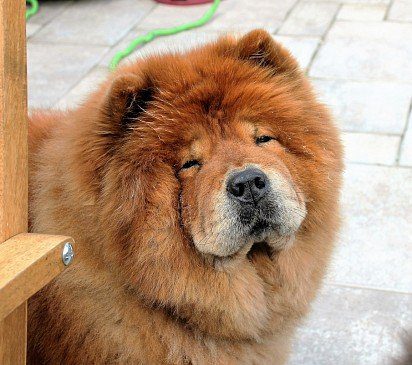
What to look for when choosing a puppy?
- The color of the coat on the muzzle, paws and under the eyes. This is the color your Chow Chow will have when it grows up.
- A six-week-old puppy has milk teeth. The mouth, including the palate and tongue, should be blue-black, the tail held high, and the ears fully or partially raised.
- Observe the animal, determine its temperament. Cowardly aggressive puppies should be culled by you immediately.
- Assess the condition of the baby’s eyes: are there any purulent discharges or traces of active lacrimation. Examine the eyelids – one of the typical diseases of the Chow Chow, entropy (eyelid torsion), can appear as early as puppyhood.
Photo of chow-chow puppies
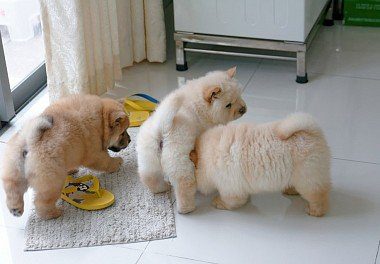
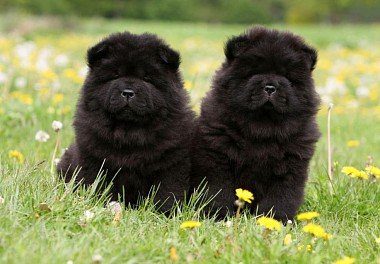
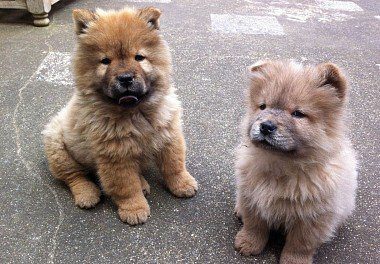
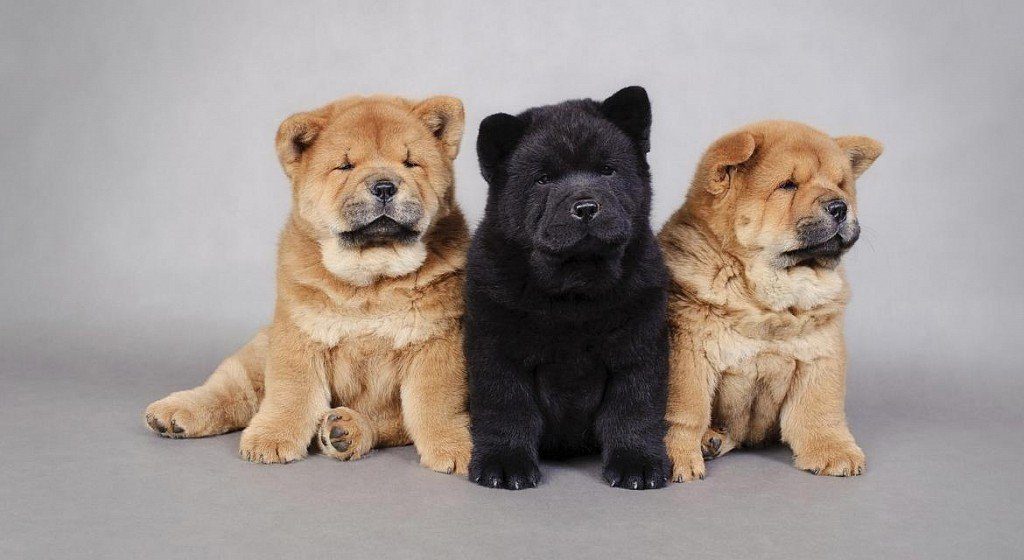
How much does chow chow cost
Chow Chow has become increasingly popular in recent years. On the one hand, this dictates high prices for puppies, and on the other hand, it increases the likelihood that unscrupulous breeders will sell you a low-quality dog.
If you are not interested in the dog’s pedigree and you are ready to put up with the presence of defects and even disqualifying signs in your chosen one, then buying a small Chow Chow can cost you approximately 100-150$. A puppy without a passport, but fully complying with the breed standards, will already cost much more – 350-400$. For a show class representative purchased in a specialized nursery or from well-known breeders, you will have to pay at least 800$. A bitch, especially of elite bloodlines, will cost more than a male.



